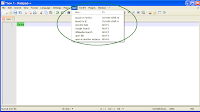



These are excellent projects/libraries for C++ and can be freely downloaded. Please refer their license details for your specific need or use. Boost can be downloaded from http://www.boost.org/, Apache's log4cxx can be downloaded from http://logging.apache.org/log4cxx/download.html, and GNU's GMP can be downloaded from http://gmplib.org/#DOWNLOAD.
I started compiling these and installed towards compiling xmlbeansxx on Mac. It was very straight forward and the standard "./bootstrap", "./configure", "./make" and "./make install" did the trick.
I've used "--enable-cxx" for GMP so as to enable C++ support. This is needed since the default is "no" i.e. without C++ support.
I want to try xmlbeansxx when I get time. Lets see.




